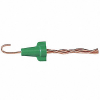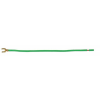Chrissy Chac
New Member
Hi!! I am a newby here with my first thread and I am hoping that one of you can help me. I was trying to switch my bathroom light fixture to a new one. I am not very electrical savvy so I watched many YouTube videos on how to do this lol. It looked simple enough-remove the existing light fixture and add attach the ground wire to the green screw then attach the white wires together as well as the black ones.
When I began to remove the existing fixture I noticed that not only do I not have any black wires, but I have many white ones and one red.
Do I just attach the black wire to the red one?
When I began to remove the existing fixture I noticed that not only do I not have any black wires, but I have many white ones and one red.
Do I just attach the black wire to the red one?







